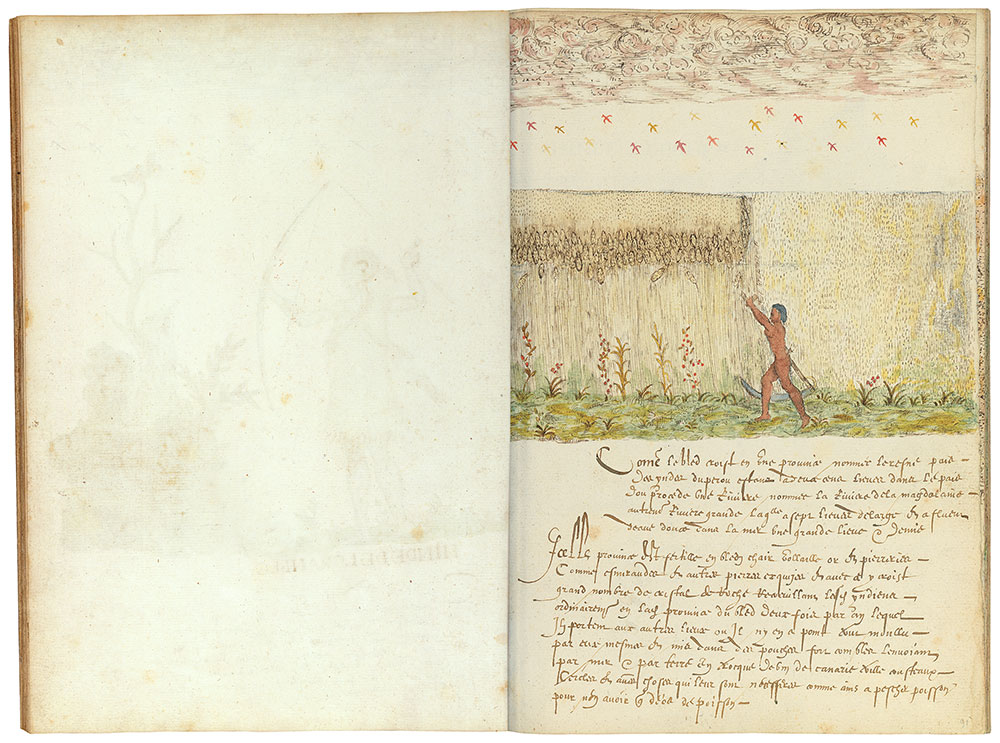
Histoire Naturelle des Indes
Illustrated manuscript
Bequest of Clara S. Peck, 1983
In 1983, The Morgan Library & Museum received, as the bequest of Clara S. Peck, an extraordinary volume whose beautiful paintings and descriptions document the plant, animal, and human life of the Caribbean late in the sixteenth century. Spaniards had already begun to exert influence over the indigenous people of the area when explorers from England and France arrived, among them Sir Francis Drake. The volume, known as the Drake Manuscript and titled Histoire Naturelle des Indes when it was bound in the eighteenth century, gives us a wonderful picture of daily life at the time of Drake's many visits to the region. Although Drake's connection to the manuscript is uncertain, he is mentioned on more than one occasion by the authors. Drake himself is known to have painted, but none of his work survives.
Contents: 199 images of West Indian plants, animals and human life, with accompanying manuscript captions written in late sixteenth-century French.
Medium: Most of the illustrations consist of a black chalk underdrawing and a combination of pen and brown ink with watercolor; on some images selected areas have also been glazed with a gum.
Binding: Bound or rebound in brown leather in the late 18th century.
Pagination: Penciled folio numbers (1–125) in lower right corner of each page were added by The Morgan Library & Museum. Folios 92v–93, 93v–94, and 95v–96 are fold-out leaves.
Come Le Bled Croist En Vne Prouince Nommee Leresne Pais-des Yndes Du Perou. . .(How the Wheat Grows in a Province Called Leresne, Land of the Indians of Peru, Being Two Hundred Leagues Inside the Country Where a River Called La Magdalena, Also Called the Great River, Originates, Which Is Seven Leagues Wide and Empties Fresh Water into the Sea for a Good League and a Half)
This province is fertile in wheat, meat, fowl, gold, and gems, like emeralds and other precious stones, and, with these, is found plenty of rock crystal. The Indians ordinarily harvest wheat twice a year which they take to other places where there is none at all, completely ground by them, and put it into sacks filled to capacity, sending them by sea and land in exchange for wine from the Canaries, linen, knives, hoops, and other things which they need, like fish-hooks, because they have only those made of fish-bone.
